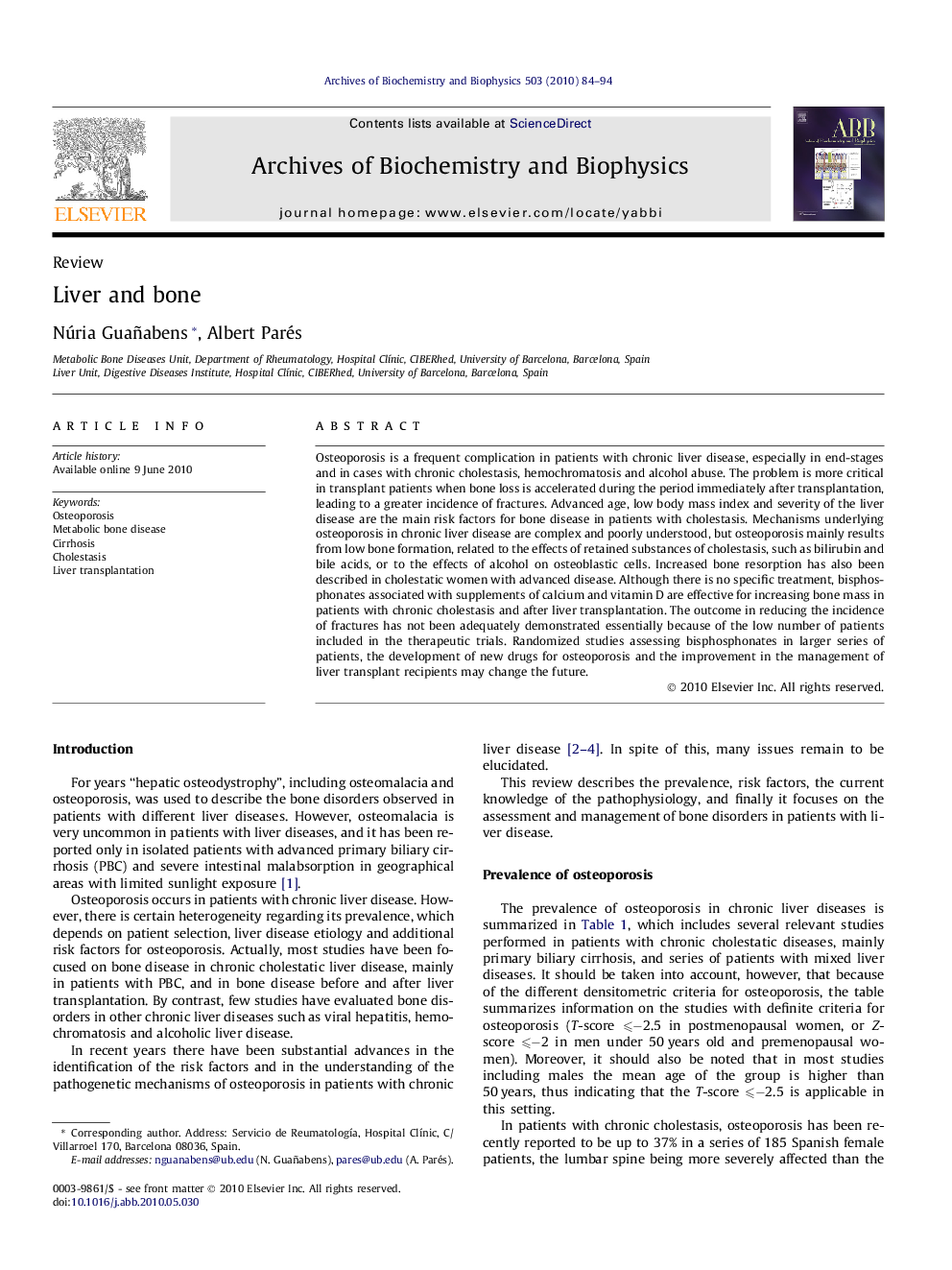| Article ID | Journal | Published Year | Pages | File Type |
|---|---|---|---|---|
| 1925922 | Archives of Biochemistry and Biophysics | 2010 | 11 Pages |
Osteoporosis is a frequent complication in patients with chronic liver disease, especially in end-stages and in cases with chronic cholestasis, hemochromatosis and alcohol abuse. The problem is more critical in transplant patients when bone loss is accelerated during the period immediately after transplantation, leading to a greater incidence of fractures. Advanced age, low body mass index and severity of the liver disease are the main risk factors for bone disease in patients with cholestasis. Mechanisms underlying osteoporosis in chronic liver disease are complex and poorly understood, but osteoporosis mainly results from low bone formation, related to the effects of retained substances of cholestasis, such as bilirubin and bile acids, or to the effects of alcohol on osteoblastic cells. Increased bone resorption has also been described in cholestatic women with advanced disease. Although there is no specific treatment, bisphosphonates associated with supplements of calcium and vitamin D are effective for increasing bone mass in patients with chronic cholestasis and after liver transplantation. The outcome in reducing the incidence of fractures has not been adequately demonstrated essentially because of the low number of patients included in the therapeutic trials. Randomized studies assessing bisphosphonates in larger series of patients, the development of new drugs for osteoporosis and the improvement in the management of liver transplant recipients may change the future.
